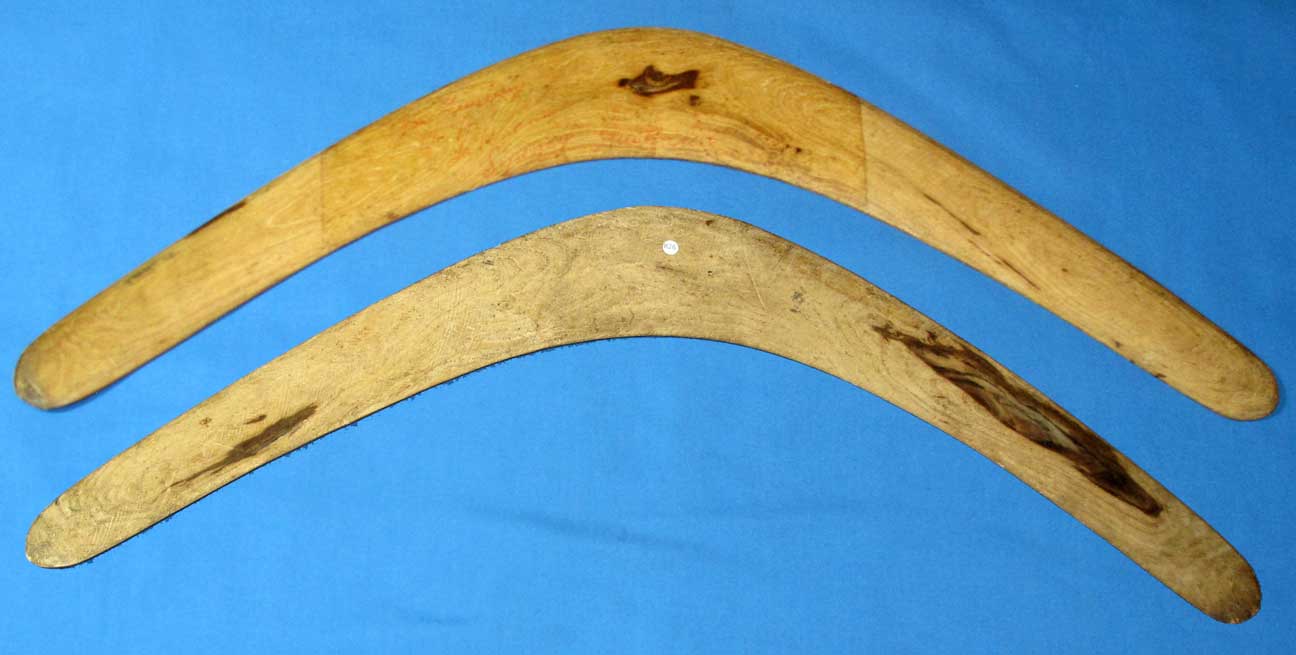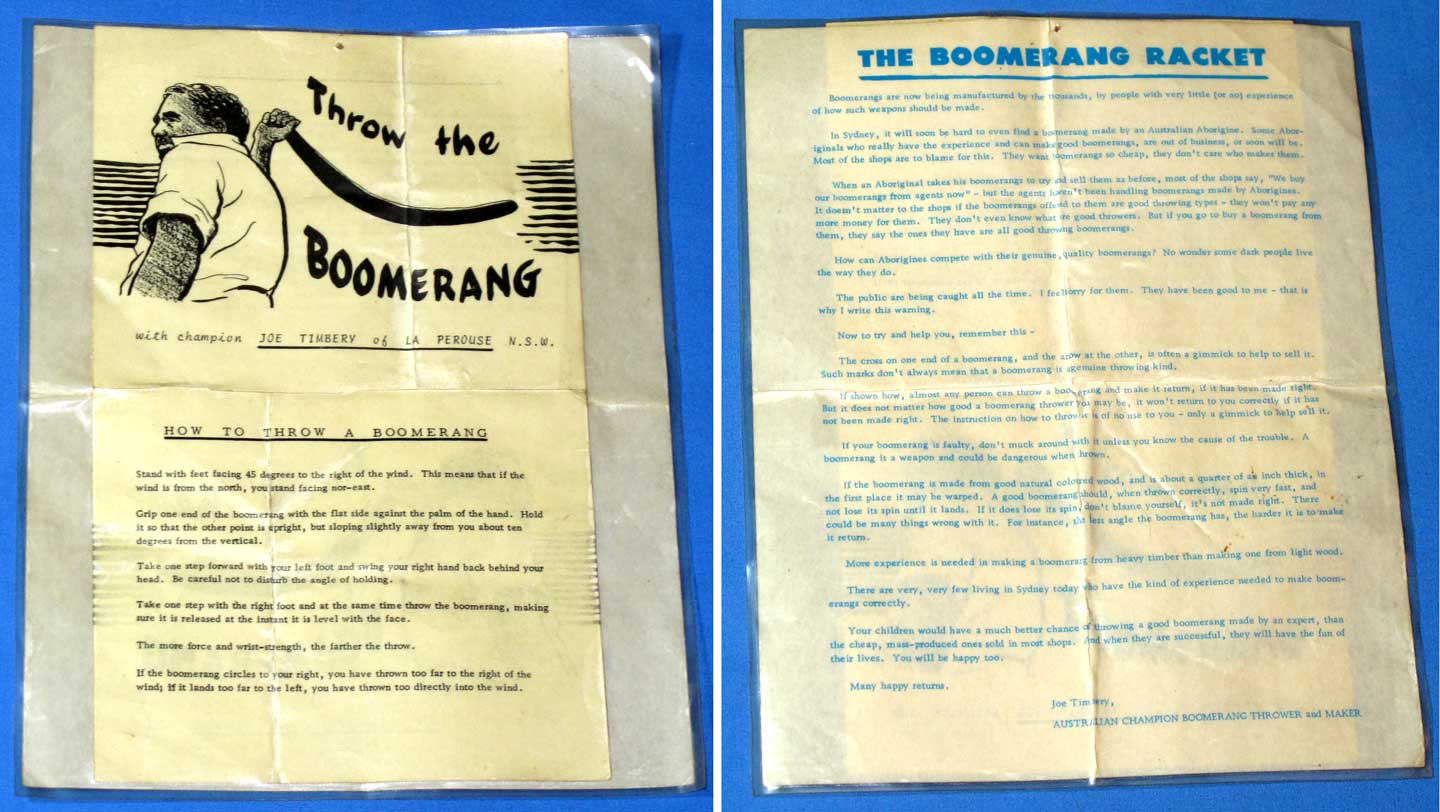Item K26
This Item was Sold on 2 March 2014
for $111
Similar artifacts for sale are often found on the Aboriginal
Boomerangs web page.
Historical Pricing information for this item and similar artifacts can be found at: Historical Artifact Prices.
|
This Australian Aboriginal traditional boomerang was made by Joe Timbery out of a natural elbow. The grain runs along the curvature of the boomerang and the airfoiling is excellent. The surface is smooth, but not coated with varnish or oiled. Joe Timbery is one of the most famous members of the Timbery family from La Perouse, located near Sydney. Joe made a large number of boomerangs for Duncan MacLennan of the Sydney Boomerang School. In 1968, a U.S. serviceman named Derrol Charles was in Australia on leave from the VietNam war. Derrol visited Duncan's shop and asked if he could learn to throw directly from an Aborigine. Duncan gave him Joe's home address. Derrol took a cab to Joe's house and bought two boomerangs from Joe. This is one of the two boomerangs, so I guarantee that this is an original Joe Timbery boomerang, even though it is not signed. One of Joe's original throwing instruction sheets is included and it is laminated in plastic. A fine collectible in excellent condition.
Joe Timbery (1912 - 1978) is one of the most famous members of the famous Timbery family with roots in La Perouse, located north of Sydney on Australia's south east coast. Joe's grandmother, Emma, (1842-1916) was known as Queen Timbery and she is famous for making shell necklaces. Joe made a large number of boomerangs, shields and other collectibles for the tourist industry. Some were made like pre-contact artifacts and some were painted or engraved with motifs such as Australian flora and fauna or iconic images like the Harbor Bridge. Joe was also well known for his throwing abilities. He gave boomerang lessons, wrote poetry and told stories. Joe traveled to other countries and is famous for throwing demonstrations in France and for Queen Elizabeth in the 1950s. In the 1960s, Joe started to make boomerangs for Duncan MacLennan, founder of the Sydney Boomerang School. Joe continued to make boomerangs for Duncan until Joe's death. Australian Aborigines are well known for making boomerangs. The majority of the Aborigines had the technology to make throwsticks, or non-returning boomerangs. Only a small percentage of the tribal groups knew how to make true returners and most of these came from the eastern coastal regions of Queensland, New South Wales and Victoria. During the past century, the majority of the Aborigines came out of the bush and were assimilated into the European culture. Many Aborigines began making returning style boomerangs to sell to tourists. The earliest ones were well made out of natural timber and with the grain following the curvature of the boomerang. Today, most hardwood boomerang are cut out of a large board and the grain is usually straight and running parallel to a line spanning the tips of the blades. Boomerangs that are made with the grain following the contour of the blades are much stronger and more valuable. In addition, only a small percentage of the boomerangs have good airfoiling. The majority do not. Most "tourist boomerangs" have painted upper surfaces that display Australian animals and decorative lines and/or geometric patterns. Most pre-contact returners have no artwork or the artwork is simple and etched into the surface. It is easy to tell the tourist boomerangs from the valuable ethnographic artifacts. However, tourist boomerangs that are made properly with the grain running along the contour and with good airfoiling and art fly well and they do have good collectable value, especially if they are made by famous Aboriginal artists with last names like Onus , Timbery or Roberts |


How to Order | Back to: Aboriginal Boomerangs | Collectable Artifacts | Historical Artifact Prices | contact: Ted Bailey